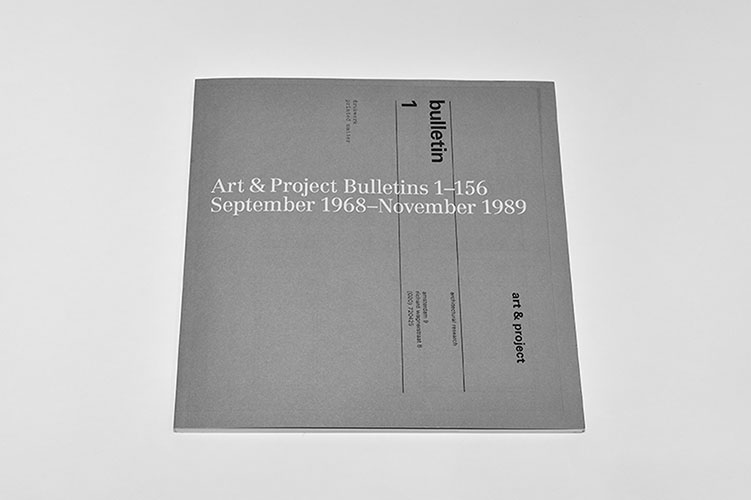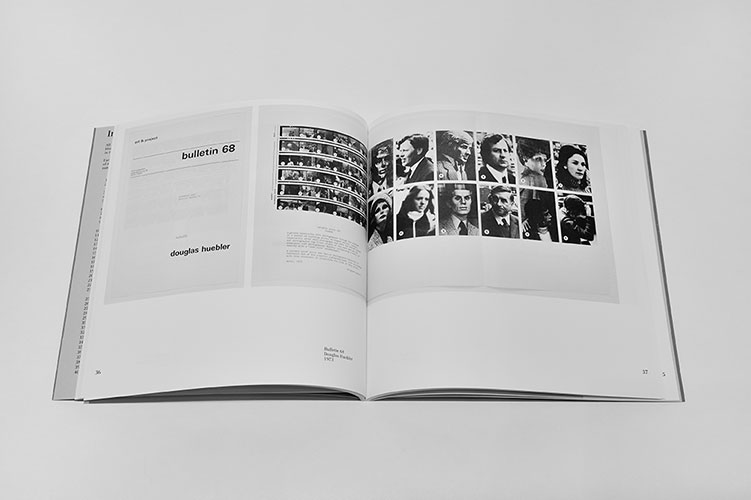Art & Project Bulletins 1-156 September 1968 – November 1989 (2011)
22,5 x 22,5 cm
84 pages
book
edited by Louise Riley-Smith and &:christophe daviet-thery
co-published with Louisa Riley-Smmith , christophe daviet-thery and Cabinet Gallery London
designed by Jérôme Saint Loubert-Bié
text by Clive Phillpot
interview with Ton Geerts
750 copies
sold out
Back in early 1968 when the bulletin appeared as « Architectural Research », the short statement, printed at the bottom of the first page, reflects the spirit of the time: « Art & Project plans to bring you together with the ideas of artists, architects and technicians to discover an intelligent form for your living and working space. Art & Project invites you to participate in its exhibitions which will explore ways in which art, architecture and technology can combine with you own ideas ». The statement proved to be prophetic. Both the bulletin and the Amsterdam gallery gained recognition, thus attracting artists from all over the world wanting to contribute or use the bulletin as a medium to explore their own work. It appealed to artists from the Conceptual Art movement for whom the bulletin became a means to convey their ideas of art to a viewer/reader at a low cost, having no value but for the ideas it contained. Bulletins were mailed free of charge to an international mailing list, or distributed in galleries. Though the bulletin contained original material presented in a sequence determined by the artist, the reader was free to read the material in any chosen order. As stated by Lawrence Weiner, who produced five bulletins, « They (books) are perhaps the last impositional means of transfering information from one to another (source) ».
The bulletins importance as an archive of this period is unrivaled, both for the quality of the original pagework and the caliber of artists involved. Many key artists of the period contriuted to one or more of the bulletins: Robert Barry made four, Stanly Brown made seven, Jan Dibbest made six, Hamish Fulton made three, Gilbert & George made four, Douglas Huebler made four, Sol Lewitt made five, Richard Long made seven, and Allen Ruppersberg made two.
From Daniel Buren’s transparent bulletin to Sol Lewitt’s beautiful bulletin folded into 48 small squares, or Bas Jan Ader’s final bulletin mailed when he died to Gilbert & George’s fragile double portrait, these publications are a unique, mobile and international artwork, which stands apart from anything produced in this period, considering the artists involved and quality of original artwork. Today, it is increasingly included in exhitions dealing with Conceptual Art and its influences.
Photographs : © Rebecca Fanuele

